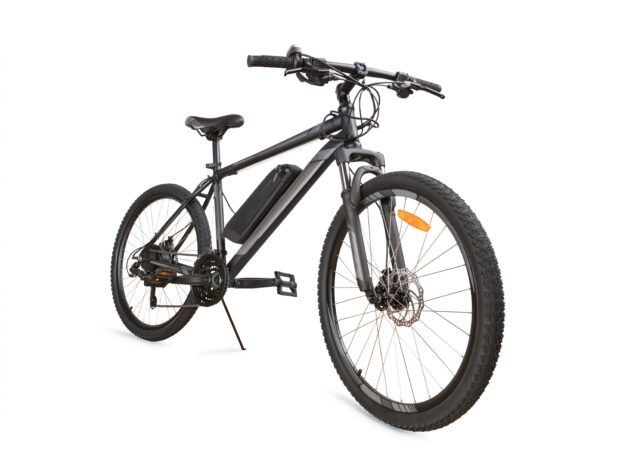Electric bike and powered scooter injuries surged between 2019 and 2022 by 293 percent and 88 percent, respectively, according to Columbia University’s Mailman School of Public Health.
The findings, published in the American Journal of Public Health, examines the existing information and knowledge gap related to sociodemographic and risk factor variables that may contribute to micromobility vehicle-related injuries.
According to the university, micromobility generally refers to any small, low-speed, human- or electric-powered transportation device.
Between 2019 and 2022, e-bike sales increased by 269 percent and surpassed the sales of electric cars and trucks according to news reports.
“Our results underscore the urgent need to improve micromobility injury surveillance and to identify strategies for cities to improve user’s safety so that micromobility can be a safe, sustainable, equitable, and healthy option for transportation,” said Kathryn Burford, PhD, Department of Epidemiology, Columbia Mailman School and first author. “Understanding how injury types and risk factors vary by mode can inform emergency department utilization, resource allocation, and intervention strategies and policies to promote safe micromobility use.”
Using 2019 to 2022 data from the National Electronic Injury Surveillance System (NEISS) to extract injuries associated with micromobility devices the researchers compared patterns and trends for 1,933,296 estimated injuries associated with e-bikes, bicycles, hoverboards and powered scooters.
NEISS samples 96 hospitals in the U.S. that contain at least 6 beds and an emergency department (ED).
Of 48,857,022 total injuries that resulted in an ED visit between 2019 and 2022, there were 1,933,296 estimated micromobility injuries. Most involved bicycles and accounted for an estimated 33.2 injuries per 1000 total emergency department injuries.
Powered scooter injuries accounted for 3.4; e-bike injuries seen in the emergency department were 1.2 and hoverboard injuries accounted for 1.8.
Of all estimated hoverboard injuries, 76 percent were among those aged younger than 18 years compared with 14.5 percent of e-bike injuries and 16 percent of powered scooter injuries.
By contrast 57 percent of powered scooter injuries, 49 percent of e-bike injuries, and 31 percent of bicycle injuries were among those aged 18 to 44 years. Among older adults (65-84 years), the highest proportion of micromobility injuries was bicycle-related closely followed by e-bike-related injuries.
The proportion of males injured in a powered scooter and bicycle-related incident was higher compared with females.
Overall, the rate of hoverboard-related injuries decreased over the four years and among the pediatric population, the research found, noting the decrease might be explained by the 2018 American Academic of Pediatrics warning of the dangers of hoverboard use.
“Conversely, the considerable increase in electric micromobility injuries we are experiencing may be attributable to the lack of access, education, and regulation for protective equipment as shared micromobility systems, such as NYC’s Citi Bike program, are not required to provide helmets to users,” said Andrew Rundle, DrPH, professor of Epidemiology and a senior author.
In a previous paper published by the authors on alcohol and bicyclist injuries, they noted that complete and accurate data for helmet use, substance use, other risk factors, and coding of micromobility devices remains a major limitation among national public-use datasets such as NEISS.
“Legislation is lacking on where micromobility devices can be ridden and legislation regulating the riding of these devices while under the influence of alcohol or other recreational drugs is inconsistent and historically difficult to pass,” said Burford.
Powered scooter injuries exhibited the highest prevalence of alcohol use, followed by e-bike injuries.
When helmet use was reported, in about 20 percent of cases, injured bicycle and e-bike users were more likely to use helmets than injured powered scooter or hoverboard users.
The lowest proportion of helmet use was observed among hoverboard injuries, and these injuries were also more likely to be diagnosed as concussions, the research found.
Burford and Rundle also note that, improving availability of active transportation infrastructure, like protected bicycle lanes, near high-usage locations such as downtown areas might offer cities an alternative, and quicker to implement, strategy for making streets safer for micromobility users.
To support urban design for safe micromobility usage in busy downtown areas, for example, Burford and colleagues are planning research to identify built environment features that are associated with lower risk for injuries among micromobility riders.
Co-authors are Nicole Itzkowitz, Columbia Mailman School of Public Health; Charles Di Maggio, NYU Grossman School of Medicine; and Stephen Mooney, School of Public Health, University of Washington.
Columbia University’s Mailman School of Public Health. (2024, September 24). Rates of e-bike injuries rise fourfold and powered scooter injuries nearly double. ScienceDaily. Retrieved October 8, 2024 from www.sciencedaily.com/releases/2024/09/240924165749.htm





















 Viewpoint: Mapping Evolving Regulatory Terrain for MGAs, MGUs and Other DUAEs
Viewpoint: Mapping Evolving Regulatory Terrain for MGAs, MGUs and Other DUAEs  Executives on the Move at HSB, American Modern Insurance Group, AIG
Executives on the Move at HSB, American Modern Insurance Group, AIG  U.S. E&S Outlook No Longer Positive: AM Best
U.S. E&S Outlook No Longer Positive: AM Best  Women Are Now Leaning Out in the Workplace
Women Are Now Leaning Out in the Workplace 